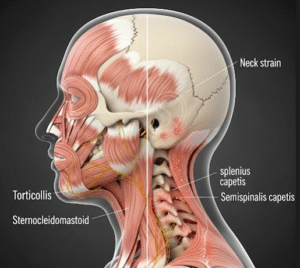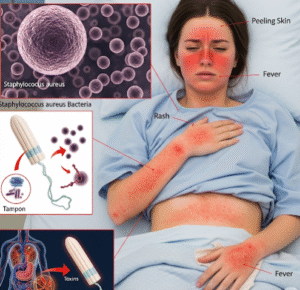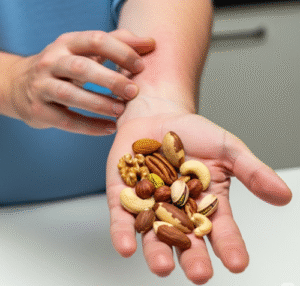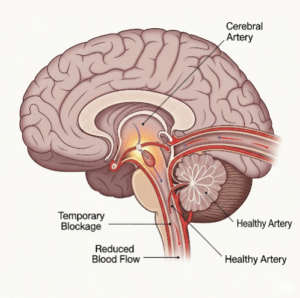Overview
Tapeworm infection, also known as cestodiasis, is a parasitic disease caused by ingestion of tapeworm larvae or eggs. Tapeworms are flat, segmented worms that inhabit the intestines of humans and animals. Infection can lead to digestive disturbances, nutritional deficiencies, and in some cases, severe systemic complications if larvae migrate to other organs. South Korea, with its advanced healthcare infrastructure, provides accurate diagnosis, effective antiparasitic treatments, and preventive education to minimize tapeworm infections, particularly in travelers or populations consuming undercooked meat or fish.
What is Tapeworm?
A tapeworm is a parasitic flatworm belonging to the class Cestoda. Humans typically acquire infection by ingesting tapeworm eggs or larvae through contaminated food, water, or direct contact with infected animals. Common tapeworm species affecting humans include:
- Taenia saginata: Beef tapeworm
- Taenia solium: Pork tapeworm, which can also cause cysticercosis if larvae migrate to tissues
- Diphyllobothrium latum: Fish tapeworm, often from raw freshwater fish
- Hymenolepis nana: Dwarf tapeworm, common in children and transmitted via contaminated food or fecal-oral route
Once ingested, tapeworms attach to the intestinal lining using a scolex (head) and grow into long, segmented worms that release eggs in feces, continuing the parasitic life cycle. In South Korea, modern laboratories and diagnostic techniques enable precise identification of the species, guiding effective treatment.
Symptoms
Symptoms of tapeworm infection vary depending on species, worm load, and location in the body. Many individuals remain asymptomatic, especially with low parasite burden. When symptoms occur, they may include:
- Abdominal pain, discomfort, or bloating
- Diarrhea or alternating constipation and diarrhea
- Unexplained weight loss despite normal appetite
- Nutritional deficiencies, including vitamin B12 or iron deficiency
- Fatigue and weakness due to malabsorption
- Visible segments of the worm in stool
- Rare complications such as cystic lesions in tissues (cysticercosis) or neurological symptoms in severe T. solium infection
Prompt recognition of these symptoms is essential, as tapeworm infections can persist for years if untreated.
Causes
Tapeworm infection is caused by ingesting eggs or larvae from contaminated sources. Key causes include:
- Consumption of undercooked or raw beef, pork, or freshwater fish containing larval cysts
- Contaminated water or food with tapeworm eggs, often due to poor sanitation
- Close contact with infected animals, particularly dogs and pigs
- Fecal-oral transmission, especially in children or in areas with inadequate hygiene
- Travel to regions with higher prevalence of tapeworm infections
In South Korea, public health measures focus on food safety, proper cooking practices, and sanitation to reduce tapeworm transmission.
Risk Factors
Certain behaviors and conditions increase susceptibility to tapeworm infection:
- Eating raw or undercooked meat or fish, including traditional Korean dishes such as raw fish or beef preparations
- Poor hygiene or handwashing practices
- Living in or traveling to areas with inadequate sanitation
- Close contact with infected animals
- Weakened immune system, which may allow higher parasite loads or complications
- Children, who are more likely to have close contact with contaminated surfaces or food
South Korean public health campaigns educate communities on safe food handling and personal hygiene to mitigate these risks.
Complications
Untreated tapeworm infections can lead to several complications:
- Malnutrition due to impaired absorption of nutrients
- Vitamin deficiencies, including B12 deficiency leading to anemia
- Intestinal obstruction in cases of heavy worm burden
- Cysticercosis in T. solium infection, which can affect muscles, eyes, or the central nervous system
- Seizures or neurological deficits if larvae invade the brain (neurocysticercosis)
- Digestive disturbances and chronic gastrointestinal discomfort
Early diagnosis and treatment in South Korea significantly reduce the risk of these severe complications.
Prevention
Preventing tapeworm infection involves dietary, hygiene, and public health measures:
- Cook meat and fish thoroughly: Ensure internal temperatures are sufficient to kill larvae
- Freeze fish appropriately: Freezing at recommended temperatures can kill parasitic larvae
- Maintain good personal hygiene: Wash hands thoroughly after using the restroom and before handling food
- Safe food sourcing: Purchase meat and fish from reputable suppliers with proper inspection
- Avoid contamination: Prevent cross-contamination between raw and cooked foods
- Public health education: Awareness campaigns about parasitic infections and food safety
South Korea’s food safety regulations and community education programs play a vital role in preventing tapeworm infections.
Treatment Options in Korea
Treatment for tapeworm infection in South Korea is highly effective, tailored to species, severity, and location of infection:
Diagnosis:
- Stool examination for eggs, larvae, or worm segments
- Serological tests for systemic or tissue-invasive infections
- Imaging studies, including ultrasound or MRI, for cysticercosis or tissue involvement
Medical Treatments:
- Antiparasitic medications: Praziquantel, albendazole, or niclosamide depending on species and infection type
- Nutritional support: Addressing deficiencies such as anemia or vitamin B12 deficiency
- Symptomatic care: Managing abdominal discomfort, diarrhea, or inflammation
Surgical or Advanced Interventions:
- In cases of cysticercosis or obstruction, surgical removal of cysts or worms may be required
- Neurological complications may require additional interventions, including corticosteroids or anti-seizure medications
Supportive Care:
- Follow-up stool examinations to ensure eradication
- Education on hygiene and dietary habits to prevent reinfection
- Multidisciplinary care for severe systemic complications
South Korea’s healthcare system provides comprehensive care for tapeworm infections, combining diagnosis, treatment, nutritional support, and preventive education to ensure complete recovery and reduce recurrence.













